Clipart tagged: ‘polypi’
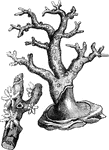
Red coral
"It appears to be confined to the Mediterranean Sea, where it grows, especially on the southern coast,…
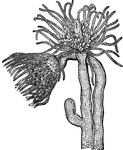
Tubularia coronata
"The Tubularidae are a family of hydroid polypes are for the most part social animals, frequently possessing…

Alcyonium elegans
"In the genus Alcyonium, the polypidom is of a spongy nature, and contains a multitude of minute calcareous…

Astraea rotulosa
"It is to this family more especially that the formation of the coral reeds is to be attributed. In…
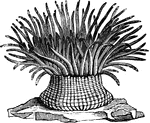
Sea-anemone
"Their tentacles, which are disposed in regular circles, and tinged with a variety of bright lively…
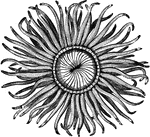
Mouth of the sea-anemone
"Their tentacles, which are disposed in regular circles, and tinged with a variety of bright lively…
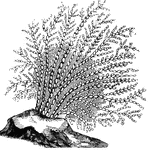
Sea-fan
"In the family of the Gorgonidae the substance of the polypidom is collected into a solid central axis,…

Sea-pen
"The main stem of the polypidom of these animals is fleshy, but is furnished with an internal bony axis,…
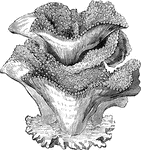
Tree-coral
"These animals are generally called Tree-corals, on account of the forms of the polypidons…
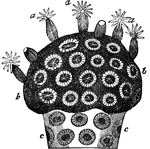
Astrae virdis
"a a, expanded polypes; b b, polypes withdrawn into their cells; c c, coral uncovered by flesh, showing…
